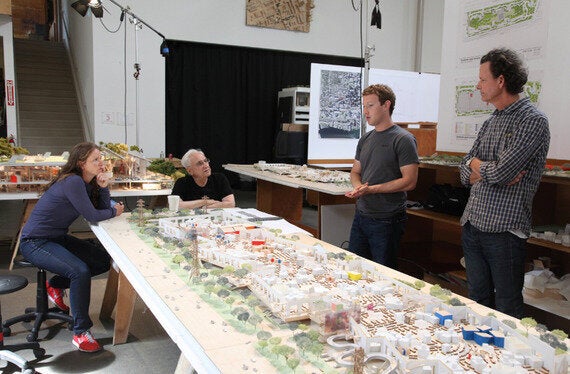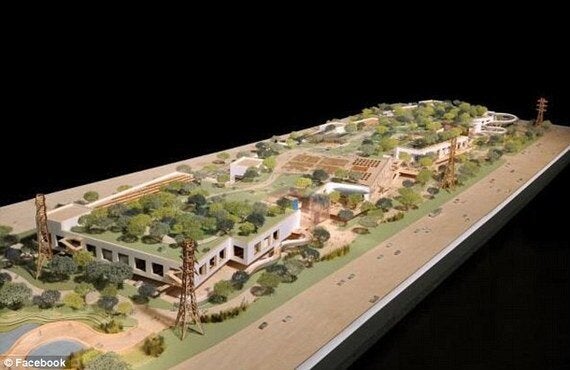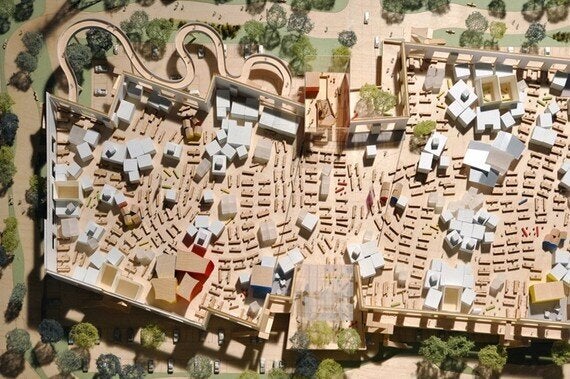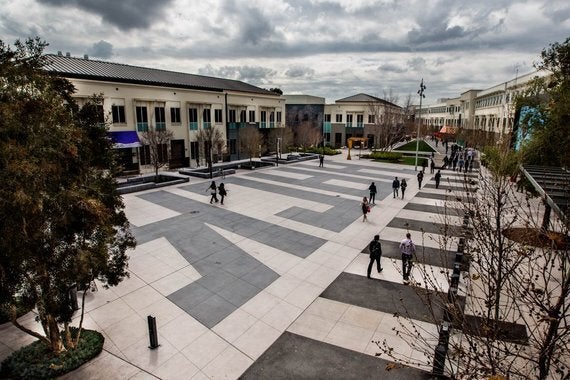"Architecture can't force people to connect, it can only plan the crossing points, remove barriers, and make the meeting places useful and attractive", a statement proclaimed by Denise Scott Brown, one of the world's most most influential architects of the twentieth century. Yet technology super giants are taking up a new challenge: Tech 5.0, the disruption of architecture in the workplace.

Copyright Photo courtesy of Gehry Partners LLP via Menlo Park City Council
When your users are counted in the billions and your stock price shoots above $70 as the giants of the past trade around the $20 mark, the competitiveness markers in your DNA move you to demonstrate to the world that your offices challenge stereotypes, architectural canons, and interior design. Beyond the Google campus-style offices full of conveniency and the starlight rocket that Salesforce is building in downtown San Francisco - convenient but most of all, an ode to power and cosmic futures, there is a big vision behind Facebook's new offices that goes beyond a workplace full of food halls, shops and good happy vibes.

Copyright Photo courtesy of Gehry Partners LLP via Menlo Park City Council
Facebook offices: a one mile-long open plan for the mother of all hacks
The office of the future is one where everyone mingles and collides in spaces of transient movement. And this is precisely the concept design that Mark Zuckerberg had as his top requirement. He just didn't want Gehry to do him a building with no interiors. Zuckerberg wanted to have a Hadron Collider of People to ignite innovation.The task was one that Gehry had not encountered before: to design a work space within an unstructured, hard to predict environment. The results are not yet there but they will be in 9-12 months, as Facebook unveils new products and services. This is not an office move story. It's a change of paradigm in product creation.

Facebook's floor plan: designed to incite 'serendipity' Copyright Photo courtesy of Gehry Partners LLP via Menlo Park City Council
As a product person behind some of today's digital technologies, I know that innovation does not happen at one's desk: it happens when there is human contact and interaction. Innovation cannot have a rational approach to how it is conjured because it emerges from chaos theory, for randomness.
The offices of the digital society are not comfortable places. They are not build to host 'content' employees. They are built to make you work with higher intensity. They are designed to ignite passion, commitment, team spirit, creativity. Facebook new offices and surrounding areas are bursting with convenience and services - like Google's, but they are primarily engineered to amplify the chances for greater number of random collisions. Google, on the other hand, separates their engineers from the rest of the other divisions.

Copyright Photo courtesy of Photo courtesy of Gehry Partners LLP via Menlo Park City Council
Facebook's 1st Quarter results were received with lukewarm reactions, yet I have reasons to believe that the effect of the company's new surroundings will ignite the true master plan of the company: to move beyond the social network and to make 'disruption' their core business because there is a big plan in Zuckerberg's mind and that is to truly challenge the status quo and change the world in many of its facets. The stock is cheap for what I believe will trade at in 9-12 months. Follow the company and its product releases and see if the bread crumbs trail highlights endeavours in health, education and far outreaching industries beyond advertising dollars.